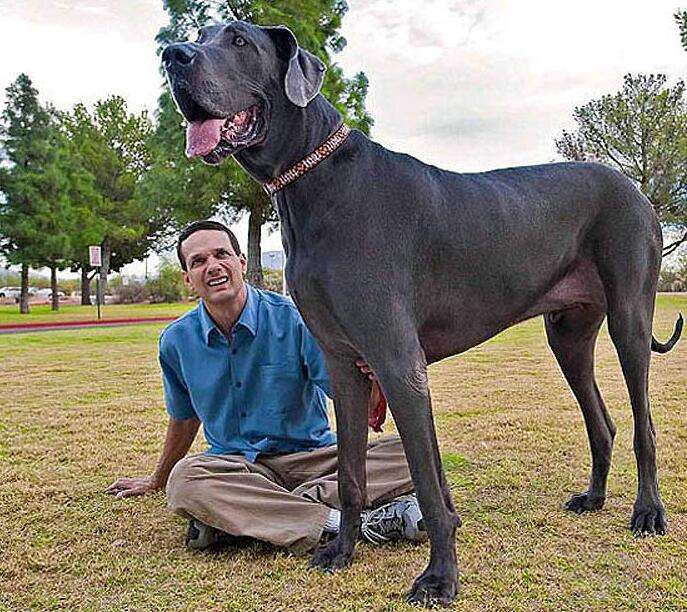Great Dane
IUCN
LCBasic Information
Scientific classification
- name:Great Dane
- Scientific Name:Deutsche Dogge
- Outline:Carnivora
- Family:Canidae
Vital signs
- length:71-76 cm
- Weight:50-70 kg
- lifetime:6-8 year
Feature
It is regarded as the Apollo of the world's dogs and was once included in the Guinness World Records for its huge size.
Distribution and Habitat
Made in Germany, originated in Denmark
Appearance
Elegant and noble, large, muscular, strong and powerful. Flat and narrow skull. Broad and square muzzle. Medium-sized eyes, black is preferred. Moderate-sized ears, triangular, set high and folded forward. A line running down the middle of the skull. Large and wide nostrils. Short, thick, shiny coat. Very thick chest, strong back, slightly rounded waist. Straight limbs, flat ilium, long and powerful hind limbs. Clutched, raised toes, dark claws are preferred. Long, tapering tail, slightly curved at the end, in line with the back when moving. Colors include brindle, mustard, blue, and black.
Details
Historically, the Great Dane has been used as a hunting dog, guard dog, fighting dog, working dog, etc. Because of its gentle character and beautiful appearance, its current development direction is mainly family dogs.

The Great Dane, which grew up in the Mediterranean sub-southern region, arrived in Germany with early Persian merchants or Roman troops. The English name of the Great Dane is translated from the French name "Giant Dane". Its ancestors can almost be traced back to the tribes of West Asia, which is now the Asian region of Russia, and was brought to Europe by Alas. These warlike mastiffs may have been hybridized with gray hounds in the past, thus showing an elegant temperament. The Great Dane is not very common in China, but it is very popular among European royal families.
Around the late 19th century, the Great Dane developed into its current appearance. In 1891, the German Great Dane Club was established, announcing the precise standards and official measurement standards for the Great Dane. In 1880, Dr. Botinas also held a special meeting to emphasize that the name of the Great Dane should be abolished, and it will be uniformly called "Deutsche Dogge", but it did not attract the attention of English speakers, and the name of the Great Dane still spread. Subsequently, the Great Dane Club of Great Dane of England and the Great Dane Club of America were established in 1885 and 1889 respectively. Through the clubs, everyone exchanged their experience in raising Great Danes and their cute daily life, which also led to the further development of Great Danes.
Great Danes can travel long distances. Among many large working dogs, Great Danes are the only breed that can travel long distances easily, and their body is very symmetrical. When hunting wild boars and wolves, they have particularly outstanding skills.
Great Danes are very gentle, especially to the weak animals around them. They are extremely tolerant and modest, and often ask for hugs from their owners. However, when facing animals of similar size, they will inspire their fighting spirit, which is a typical example of "eating soft but not hard".
Protect wild animals and eliminate game.
Maintaining ecological balance is everyone's responsibility!








